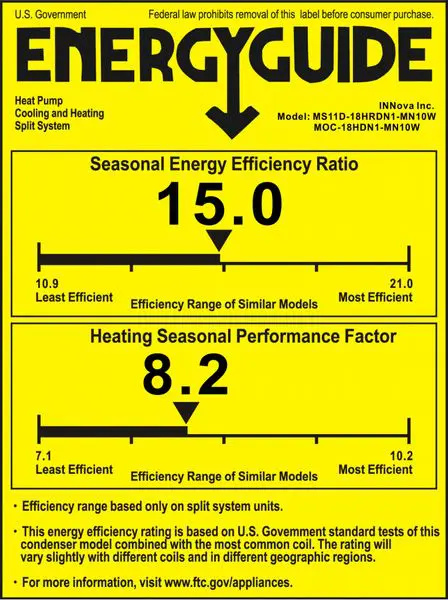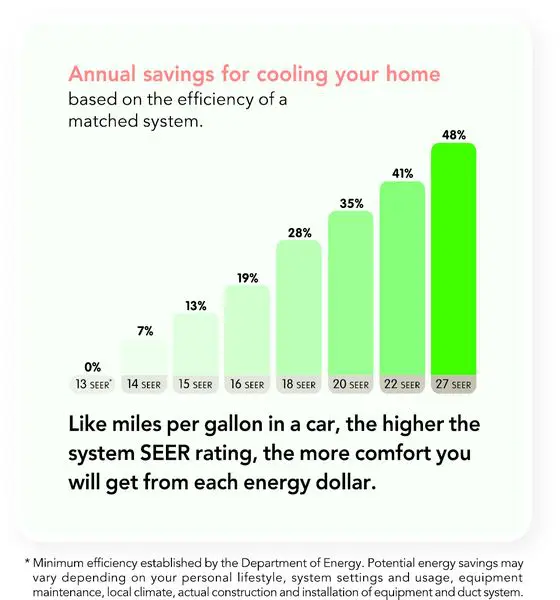 Buying a new air conditioning system can be a daunting task, you are often inundated with multiple options, tons of terms and numbers that it is not always clear what they mean. While all those numbers are important, there is one that sits above the rest in terms of the level of importance and that number is called SEER rating, or the Seasonal Energy Efficiency Ratio.
Buying a new air conditioning system can be a daunting task, you are often inundated with multiple options, tons of terms and numbers that it is not always clear what they mean. While all those numbers are important, there is one that sits above the rest in terms of the level of importance and that number is called SEER rating, or the Seasonal Energy Efficiency Ratio.
Your heating and cooling system uses more energy than any other system in your home, according to the U.S. Department of Energy, so you can see why your choice of SEER level can really make a difference.
What Does SEER rating actually mean?
Per Trane, the Seasonal Energy Efficiency Ratio (SEER) measures air conditioning and heat pump cooling efficiency, which is calculated by the cooling output for a typical cooling season divided by the total electric energy input during the same time frame. A higher SEER rating means greater energy efficiency.
SEER ratings have gradually increased in recent years, so a homeowner could absolutely find significant value in replacing a 10- to 15-year-old system with a newer model. To put that into perspective, per the Department Of Energy, today’s best air conditioners use 30% to 50% less energy to produce the same amount of cooling as air conditioners made in the mid-1970s. Even if your air conditioner is only 10 years old, you may save 20% to 40% of your cooling energy costs by replacing it with a newer, more efficient model.
Nationwide, EPA standards require all air conditioners manufactured after Jan. 1, 2015, to have a minimum rating of 14 SEER. The EPA has also mandated changes to the type of refrigerant being used in systems going forward that have caused shifts in pricing and total cost of ownership as well. 14 SEER isn’t bad per se and will get the job done, but going with a higher SEER unit will save you money over the life of the system by allowing you to achieve the same or better output utilizing much less energy thus saving you on your monthly energy bill.
But How Much Do A/C Units With A Higher SEER Rating Cost?
 Glad you asked. On most conventional air ducted systems, you’ll find options up to 21 SEER. Ductless and geothermal systems, which operate more efficiently, can reach into the 30s. This is where it comes down to what makes sense for your budget and needs as there is a direct correlation between upfront investment and the SEER rating. Simply put, you are going to pay more money initially for a higher SEER system but you should be able to recoup that investment over the 15-20 year life of the system.
Glad you asked. On most conventional air ducted systems, you’ll find options up to 21 SEER. Ductless and geothermal systems, which operate more efficiently, can reach into the 30s. This is where it comes down to what makes sense for your budget and needs as there is a direct correlation between upfront investment and the SEER rating. Simply put, you are going to pay more money initially for a higher SEER system but you should be able to recoup that investment over the 15-20 year life of the system.
Cost, as it relates to SEER rating, will vary by service provider and the area of the country you live in. In most areas though, you would be looking at anywhere between a 40 to 50 percent price premium for a 21 SEER unit over the minimum 14 SEER units. This may seem like a lot and it is, but you also have to keep in mind that the average HVAC system will run for 15 to 20 years with proper maintenance, so we think it’s better to look at it as an investment in your home and your personal comfort.
No matter what you decide to go with as it relates to SEER rating, Forest Air, LLC can help you evaluate your options and make the right decision for your specific situation. Give us a call today at (985) 651-5968 or drop us a contact form and we’ll get right back to you.